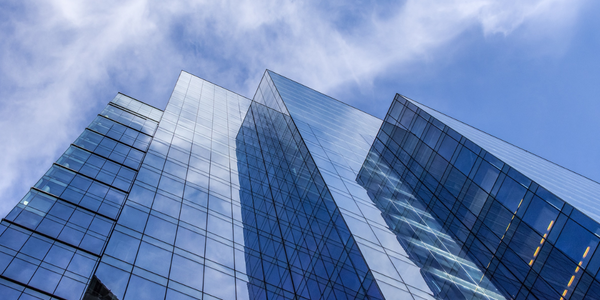Technology Category
- Analytics & Modeling - Digital Twin / Simulation
- Sensors - Temperature Sensors
Applicable Industries
- Buildings
- Construction & Infrastructure
Applicable Functions
- Product Research & Development
Use Cases
- Rapid Prototyping
- Structural Health Monitoring
Services
- System Integration
About The Customer
Zaha Hadid Architects is a renowned architectural firm founded in 1979 by the late Zaha Hadid, a pioneering architect known for her innovative and futuristic designs. The firm has a reputation for pushing the boundaries of architecture and design, often incorporating new technologies and materials into their projects. The firm's Computation and Design research group (co|de), established in 2007, focuses on developing early-design methods that enable a directed search for physically, economically, and ergonomically feasible solutions within the vast universe of architectural possibilities provided by digital design and construction methods. The co|de team, which currently consists of 10 members, distributes its activities between research, contributions to commercial projects, technological incubation of novel supporting architectural services, communication and dissemination of design discourse, research, and more.
The Challenge
Zaha Hadid Architects, a design atelier founded in 1979, has always been at the forefront of innovation, adopting theoretical guidance, systemic knowledge generation, and collaborative design. The company’s Computation and Design research group (co|de), initiated in 2007, aims to develop early-design methods that enable a directed search for physically, economically, and ergonomically feasible solutions within the vast universe of architectural possibilities provided by digital design and construction methods. For the 2015 Design Miami exhibition, the Zaha Hadid co|de team was commissioned to create a contemporary dining pavilion that combines computational design, lightweight engineering, and precision fabrication. The challenge was to create a unique dining environment, the Volu Pavilion, that was visually stunning, cost-efficient, and made use of advanced design and fabrication technologies.
The Solution
To create the Volu Pavilion, a unique lightweight, stable structure, the co|de team used the Altair HyperWorks platform for computer-aided engineering. The HyperWorks tools helped inform the design very early in the process, paving the way to create better designs from the onset. The geometry under structural loads was analyzed using a topology optimization algorithm in the Altair OptiStruct, and the structural system and skin were optimized to remove unnecessary material, resulting in a stable, yet lightest possible design. Optimization provided guidance for placement of the metal beams to create a stable form. The results received using Altair OptiStruct allowed for faster rationalization of the topology optimization results, serving as the blueprint for the designers to develop innovative shapes. An iterative process allowed for engineering feedback and the comprehensive design development of complex and expressive forms through the single bending of flat sheet materials.
Operational Impact
Quantitative Benefit

Case Study missing?
Start adding your own!
Register with your work email and create a new case study profile for your business.
Related Case Studies.

Case Study
Energy Saving & Power Monitoring System
Recently a university in Taiwan was experiencing dramatic power usage increases due to its growing number of campus buildings and students. Aiming to analyze their power consumption and increase their power efficiency across 52 buildings, the university wanted to build a power management system utilizing web-based hardware and software. With these goals in mind, they contacted Advantech to help them develop their system and provide them with the means to save energy in the years to come.

Case Study
IoT System for Tunnel Construction
The Zenitaka Corporation ('Zenitaka') has two major business areas: its architectural business focuses on structures such as government buildings, office buildings, and commercial facilities, while its civil engineering business is targeted at structures such as tunnels, bridges and dams. Within these areas, there presented two issues that have always persisted in regard to the construction of mountain tunnels. These issues are 'improving safety" and "reducing energy consumption". Mountain tunnels construction requires a massive amount of electricity. This is because there are many kinds of electrical equipment being used day and night, including construction machinery, construction lighting, and ventilating fan. Despite this, the amount of power consumption is generally not tightly managed. In many cases, the exact amount of power consumption is only ascertained when the bill from the power company becomes available. Sometimes, corporations install demand-monitoring equipment to help curb the maximum power demanded. However, even in these cases, the devices only allow the total volume of power consumption to be ascertained, or they may issue warnings to prevent the contracted volume of power from being exceeded. In order to tackle the issue of reducing power consumption, it was first necessary to obtain an accurate breakdown of how much power was being used in each particular area. In other words, we needed to be able to visualize the amount of power being consumed. Safety, was also not being managed very rigorously. Even now, tunnel construction sites often use a 'name label' system for managing entry into the work site. Specifically, red labels with white reverse sides that bear the workers' names on both sides are displayed at the tunnel work site entrance. The workers themselves then flip the name label to the appropriate side when entering or exiting from the work site to indicate whether or not they are working inside the tunnel at any given time. If a worker forgets to flip his or her name label when entering or exiting from the tunnel, management cannot be performed effectively. In order to tackle the challenges mentioned above, Zenitaka decided to build a system that could improve the safety of tunnel construction as well as reduce the amount of power consumed. In other words, this new system would facilitate a clear picture of which workers were working in each location at the mountain tunnel construction site, as well as which processes were being carried out at those respective locations at any given time. The system would maintain the safety of all workers while also carefully controlling the electrical equipment to reduce unnecessary power consumption. Having decided on the concept, our next concern was whether there existed any kind of robust hardware that would not break down at the construction work site, that could move freely in response to changes in the working environment, and that could accurately detect workers and vehicles using radio frequency identification (RFID). Given that this system would involve many components that were new to Zenitaka, we decided to enlist the cooperation of E.I.Sol Co., Ltd. ('E.I.Sol') as our joint development partner, as they had provided us with a highly practical proposal.

Case Study
Intelligent Building Automation System and Energy Saving Solution
One of the most difficult problems facing the world is conserving energy in buildings. However, it is not easy to have a cost-effective solution to reduce energy usage in a building. One solution for saving energy is to implement an intelligent building automation system (BAS) which can be controlled according to its schedule. In Indonesia a large university with a five floor building and 22 classrooms wanted to save the amount of energy being used.

Case Study
Powering Smart Home Automation solutions with IoT for Energy conservation
Many industry leaders that offer Smart Energy Management products & solutions face challenges including:How to build a scalable platform that can automatically scale-up to on-board ‘n’ number of Smart home devicesData security, solution availability, and reliability are the other critical factors to deal withHow to create a robust common IoT platform that handles any kind of smart devicesHow to enable data management capabilities that would help in intelligent decision-making

Case Study
Splunk Partnership Ties Together Big Data & IoT Services
Splunk was faced with the need to meet emerging customer demands for interfacing IoT projects to its suite of services. The company required an IoT partner that would be able to easily and quickly integrate with its Splunk Enterprise platform, rather than allocating development resources and time to building out an IoT interface and application platform.




